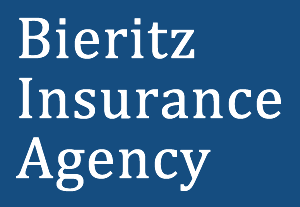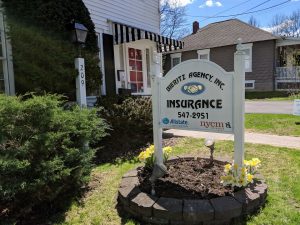Auto Insurance Basics
Understanding The Types of Coverage
When it comes to auto insurance, navigating the sea of coverage options can be overwhelming. You want to make sure you’re adequately protected, but you also don’t want to break the bank. Understanding the various types of auto insurance coverage and how they work is important for making informed decisions that align with your needs and your budget. In this article, we’ll break down the most common auto insurance coverage types to help you determine which ones are right for you.
Liability Coverage
Liability coverage is the foundation of most auto insurance policies. It’s mandatory in most states and serves to protect you financially if you’re responsible for injuring someone or damaging their property in an accident. This coverage is typically split into two categories:
- Bodily Injury Liability: This part of liability insurance covers medical expenses, rehabilitation, and even legal expenses if you injure someone in an accident. It helps pay for the injured party’s medical bills and any potential legal claims against you.
- Property Damage Liability: Property damage liability covers the cost of repairing or replacing the other party’s property (usually their vehicle) if you’re at fault in an accident. This can also include damage to structures such as fences, mailboxes, or buildings.
The coverage limits for liability insurance are typically expressed as three numbers, such as 25/50/25. In this example, it means you have coverage of up to $25,000 for each injured person, up to a total of $50,000 per accident for bodily injury, and $25,000 for property damage.
While liability coverage is mandatory, it’s essential to consider higher coverage limits to protect your assets adequately. If your insurance limits are exceeded, you may have to pay any excess amount out of pocket.
Collision Coverage
Collision coverage is optional but essential if you want to protect your own vehicle in case of an accident, regardless of who’s at fault. This coverage pays for the repair or replacement of your car if it’s damaged in a collision with another vehicle or object, such as a tree or a guardrail.
Collision coverage comes with a deductible, which is the amount you need to pay out of pocket before your insurance kicks in. The higher the deductible, the lower your premium, but keep in mind that you’ll need to pay more if you file a claim.
Collision coverage is particularly beneficial if you have a new or expensive car, as it ensures you won’t have to bear the entire financial burden of repairs or replacement in case of an accident.
Comprehensive Coverage
Comprehensive coverage, often referred to as “comp” coverage, also protects your vehicle, but it applies to non-collision incidents. This coverage pays for damages caused by events such as:
- Theft
- Vandalism
- Fire
- Natural disasters (e.g., hailstorms, floods)
- Falling objects (e.g., tree branches)
Like collision coverage, comprehensive coverage comes with a deductible. Adding comprehensive coverage to your policy can be a wise choice if you want to protect your vehicle from a wide range of risks beyond accidents.
Uninsured and Underinsured Motorist Coverage
Despite insurance requirements in most states, some drivers operate their vehicles without insurance or with insufficient coverage. Uninsured and underinsured motorist coverage (UM/UIM) is designed to protect you in case you’re involved in an accident with such a driver.
- Uninsured Motorist Coverage: This coverage pays for your medical expenses and, in some cases, property damage if you’re hit by an uninsured driver or involved in a hit-and-run accident.
- Underinsured Motorist Coverage: If the at-fault driver’s insurance isn’t enough to cover your expenses, underinsured motorist coverage can step in to bridge the gap.
UM/UIM coverage is especially valuable if you live in an area with a high number of uninsured drivers or if you want extra peace of mind.
Medical Payments Coverage (MedPay)
Medical payments coverage, often referred to as MedPay, is an optional coverage that helps pay for medical expenses for you and your passengers, regardless of who’s at fault in an accident. It can cover hospital bills, surgery, x-rays, and even funeral expenses.
MedPay can be beneficial if you have minimal health insurance or if you want additional coverage to help with medical costs related to an accident.
Personal Injury Protection (PIP)
Personal Injury Protection, or PIP, is similar to MedPay but more extensive. It covers not only medical expenses but also lost wages and other related costs. PIP is required in some no-fault insurance states, where each driver’s insurance pays for their medical expenses regardless of fault.
Rental Reimbursement Coverage
If your car is in the shop for repairs after an accident, rental reimbursement coverage can be a lifesaver. This optional coverage pays for a rental car while yours is being repaired or replaced.
Rental reimbursement coverage can be particularly valuable if you rely heavily on your vehicle for daily activities or work.
Towing and Labor Coverage
Towing and labor coverage is another optional add-on that covers the cost of towing your vehicle if it breaks down and needs to be towed to a repair shop. It can also cover other roadside assistance services, such as jump-starts, tire changes, and locksmith services.
Gap Insurance
If you lease or finance your car, gap insurance can be essential. It covers the “gap” between your car’s actual cash value (the current market value) and what you still owe on your lease or loan if your vehicle is totaled in an accident.
Gap insurance ensures that you won’t be left with a substantial financial burden if your car is declared a total loss.
Choosing the Right Coverage for Your Needs and Budget
Selecting the right auto insurance coverage can be a balancing act between protecting yourself and your assets and staying within your budget. Here are some tips to help you make an informed decision:
- Assess Your Needs: Consider your driving habits, the value of your vehicle, and your financial situation. High-value cars may warrant collision and comprehensive coverage, while older vehicles might not.
- Understand Your State’s Requirements: Make sure you meet your state’s minimum auto insurance requirements. (We can help you with this in New York State.)
- Consider Your Deductibles: Adjusting your deductibles can impact your premium. A higher deductible typically means a lower premium but more out-of-pocket costs in case of a claim.
- Evaluate Your Risk Tolerance: Think about how much financial risk you’re willing to take on. More coverage means less financial risk but a higher premium.
- Shop Around: Get quotes from multiple insurers to find the best coverage at the most competitive price.
- Bundle Policies: Many insurers offer discounts for bundling auto and home insurance policies, so explore this option if it’s available.
- Review and Update Regularly: Your coverage needs may change over time, so it’s essential to review your policy annually to ensure it still aligns with your circumstances.
In conclusion, auto insurance is not a one-size-fits-all solution. Understanding the different coverage types and their implications is crucial for protecting yourself, your passengers, and your assets. By assessing your needs, considering your budget, and making informed choices, you can find the right auto insurance coverage that provides the peace of mind you deserve on the road. Contact our team at 607-547-2951 to review your policies and get updated quotes!


